Have you ever heard the phrase “You don’t get another shot at making a first impression?” Well, that’s especially true when it comes to welcome emails.
Welcome emails are like the warm handshake you give to someone new. They’re the first step in building a good relationship with the people who sign up to hear from you. So, it’s important to make them feel welcome and special!
In this article, we’ll talk about some simple tips for making your welcome emails great. We’ll show you why they’re so important and give you some examples and ideas to help you create your own welcome emails.
Let’s get started!
What are Welcome Emails?
A welcome email is the very first email you send to people who just joined your group, bought from you, or started using your service. It’s like your introduction letter, where you tell them a bit about yourself, your business, and what they can look forward to now that they’ve joined. These emails are usually automatic, so once someone signs up, you can start connecting with them right away.
Why welcome emails are essential?
Welcome emails grab people’s attention big time. Typically, they’re opened four times more often and clicked five times more often than regular marketing emails. When someone signs up for your newsletter, they’re eager to get a welcome message right away. Some even check their inbox just for that.
Giving a genuine “thank you” and warm “welcome” helps build trust with your subscriber. This sets the stage for a lasting relationship and boosts customer loyalty.
10 best welcome Email examples and best practices
1. Set expectations for your email campaigns
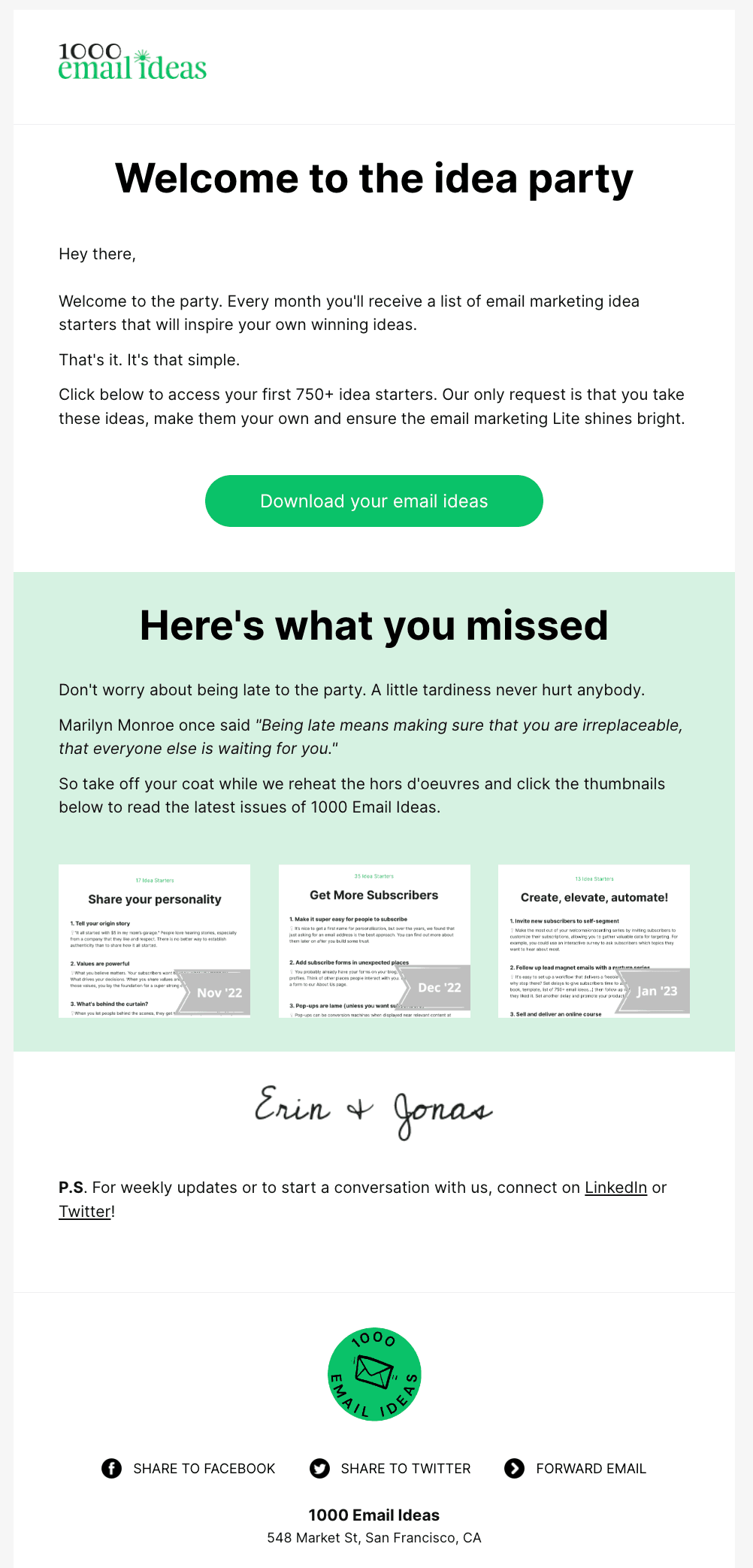
If your email campaigns fail to fulfill your promise of delivering valuable content, your subscribers might feel deceived and probably unsubscribe right away.
What’s effective?
– 1000 Email Ideas includes a newsletter archive in their welcome email.
– New customers get a clear idea of what to expect from upcoming newsletters.
Tip: Think of your welcome email as a first date. It’s your opportunity to build trust. By setting clear expectations from the start, your new subscribers will be more open to future emails. This leads to better engagement and fewer spam complaints.
2. Keep it short and sweet
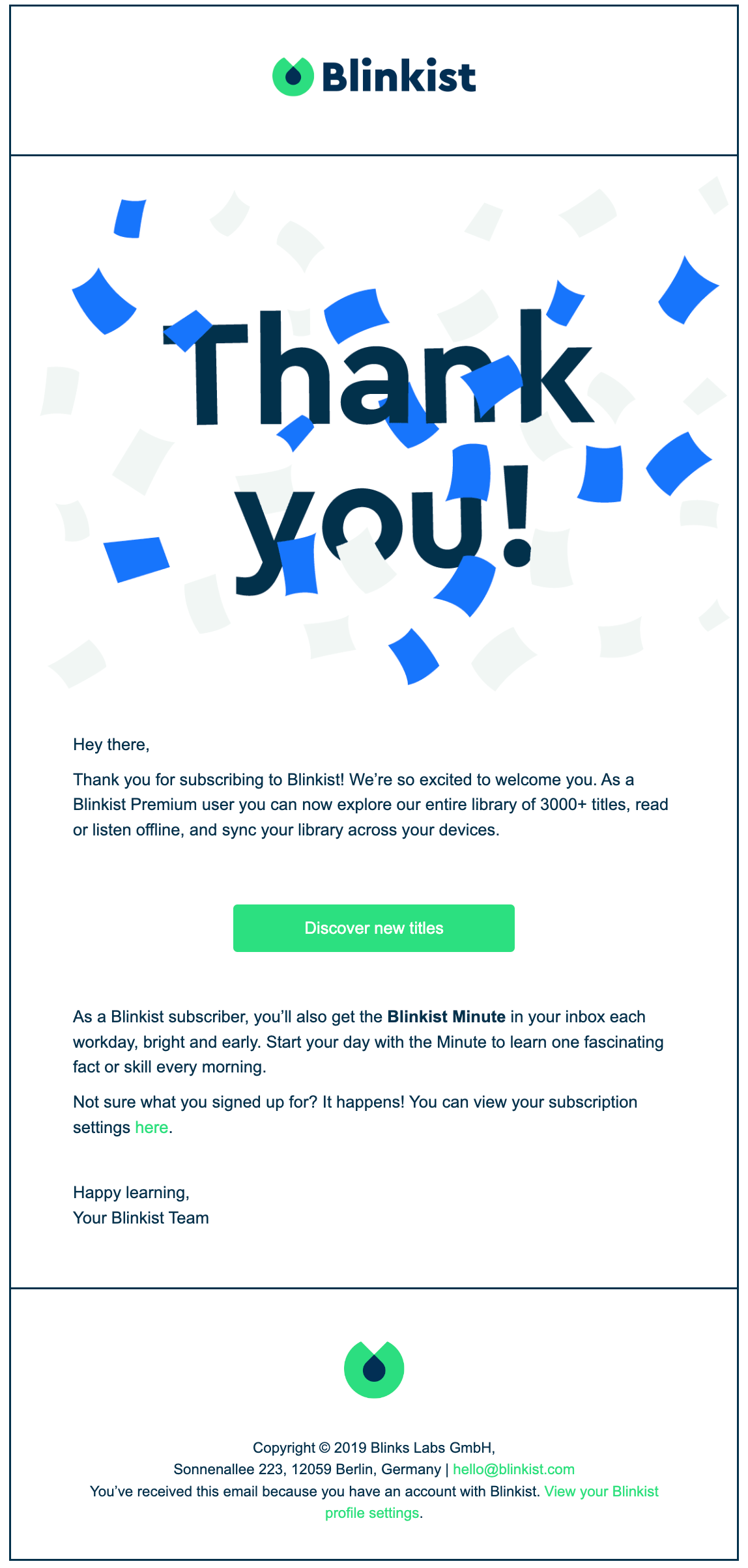
Nobody likes slogging through a super long message when they’re just getting acquainted with you. A short and friendly hello is much better for making a good impression. Remember the saying, “Keep it short and sweet”? Well, that’s usually the way to go—unless you’re explaining something as complex as quantum mechanics, then you’re in for a challenge!
What works well?
– Blinkist keeps their welcome email simple and to the point: Hello, here’s what you signed up for, here’s how to manage your subscription.
– The call-to-action (CTA) encourages readers to visit the website where they’re more likely to take action.
Tip: While it’s generally good to keep your welcome email short, around 100 words is ideal. However, if you must go a bit longer, like around 200 words, make sure to break up the text with images and offers to keep it engaging.
3. Introduce your social media channels
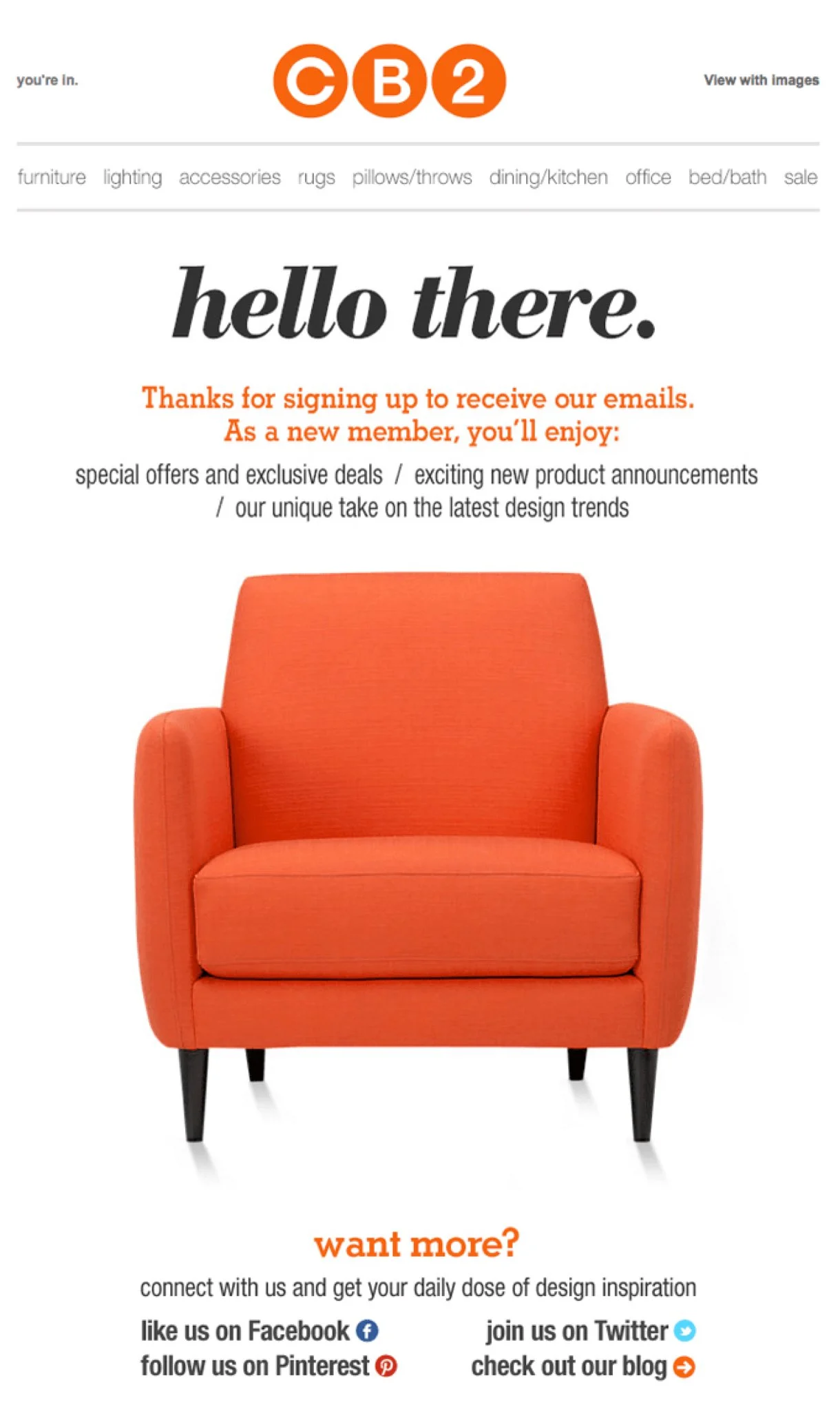
What works well?
– CB2 outlines what perks new members can expect from their email newsletters.
– The call-to-action (CTA) encourages new customers to join them on social media.
– Engaging with them online helps establish social proof and, consequently, attracts more customers.
Tip: Instead of immediately pushing for sales, deepen the connection by inviting new subscribers to connect on social media. This allows them to experience another aspect of your brand and gain insight into your values.
Building a community of email subscribers and expanding your email list is a multi-channel effort. The potent combination of email marketing and social proof contributes to forging stronger connections!
4. Sell the experience and not the product
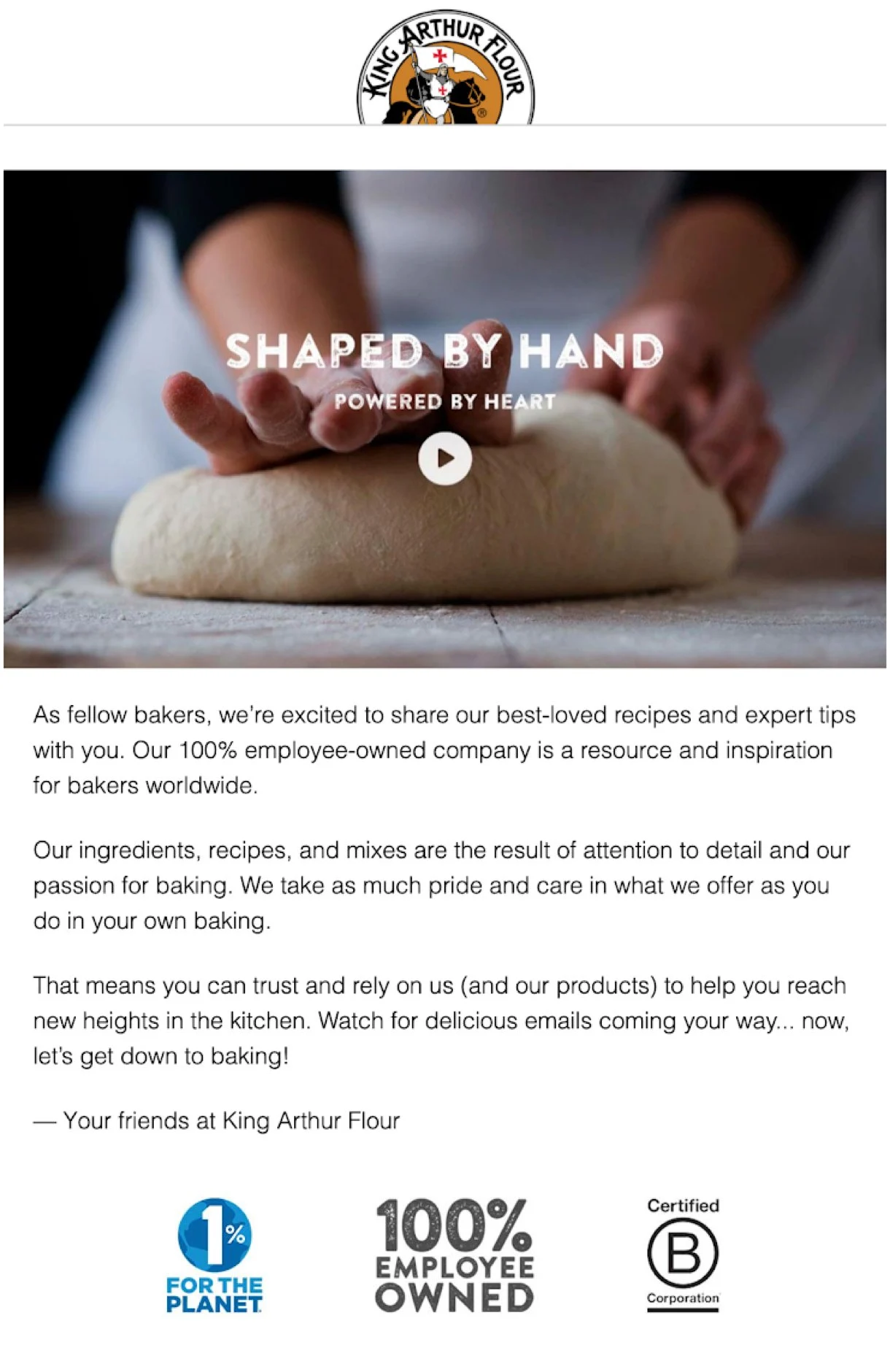
What works well?
– King Arthur Flour invites you to join their community as a fellow baker.
– They emphasize the emotional satisfaction of creating something from scratch rather than just promoting their product.
Tip: Your welcome email doesn’t always have to showcase your product front and center. Sometimes, highlighting the benefits or experience of using your product or service can be more effective. This approach piques the curiosity of new subscribers, encouraging them to connect the dots and give it a try themselves.
5. Make emails interactive
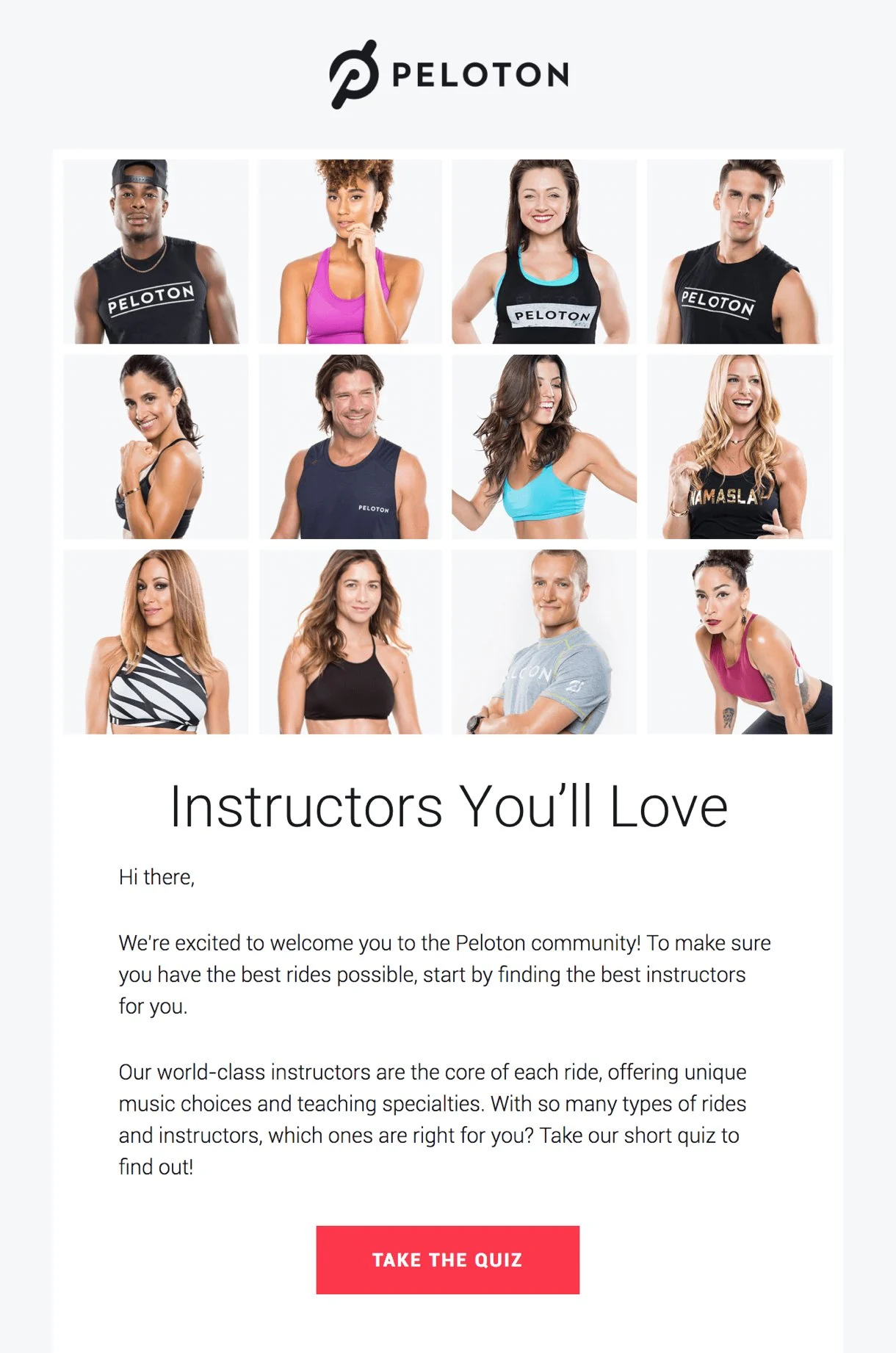
What works well?
– Peloton’s initial email grabs your attention with vibrant photos of their instructors.
– Their fitness attire reflects the high-energy workouts you’re interested in, right?
– They encourage you to take a quiz to discover your ideal coach and kickstart your journey!
Tip: With MailerLite, you can utilize the survey or quiz block to seamlessly integrate interactive surveys or quizzes directly into your newsletter.
6. Add your brand identity
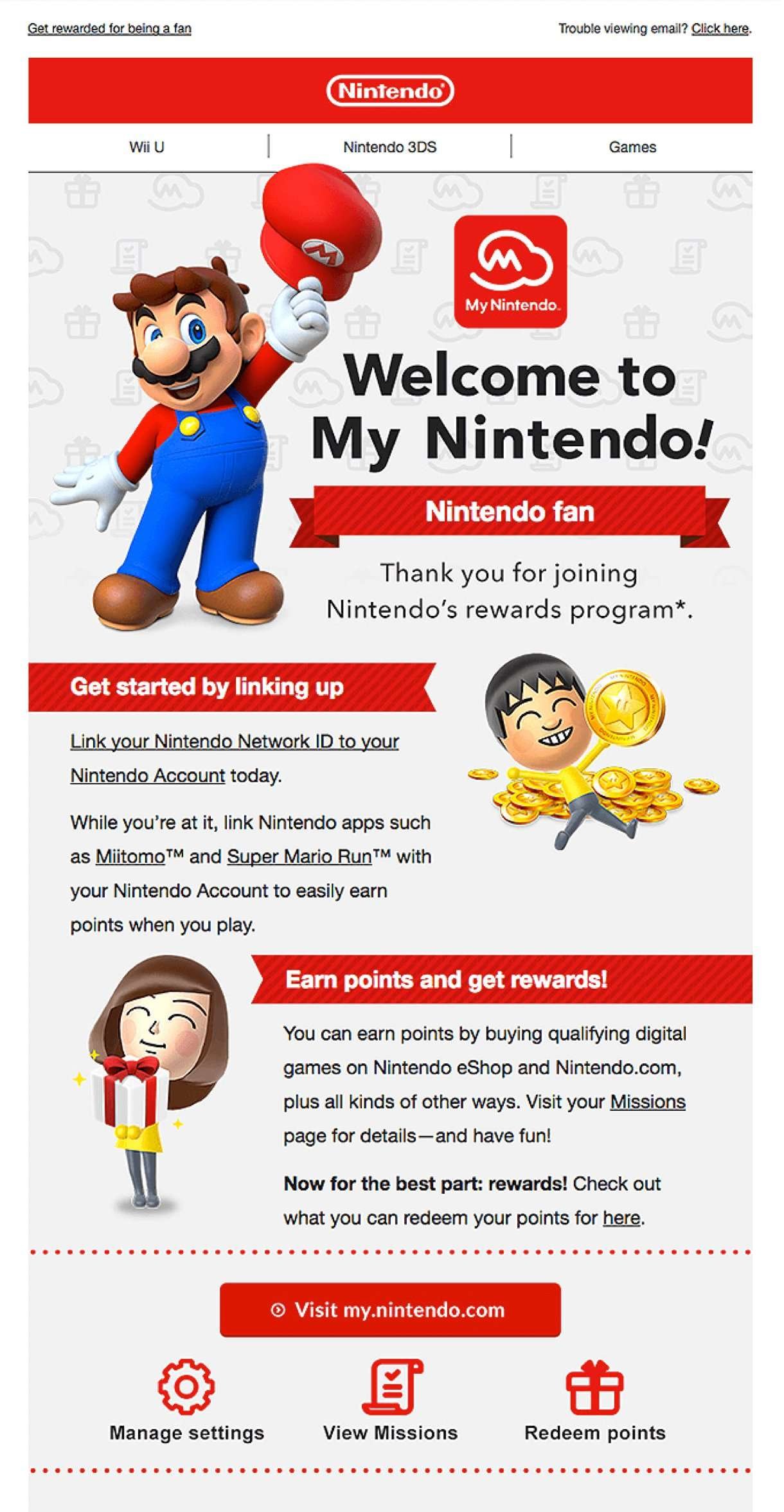
What works well?
– Super Mario’s welcome email newsletter stands out immediately with its iconic style.
– The included benefits are sure to delight any Nintendo enthusiast.
– Nintendo’s use of colors, icons, and tone of voice effectively communicates their distinctive brand.
Tip: Your new subscribers are inundated with emails daily. By establishing a unique visual identity in your first email, your subscribers will easily recognize your future emails amidst the clutter.
7. Offer a welcome discount
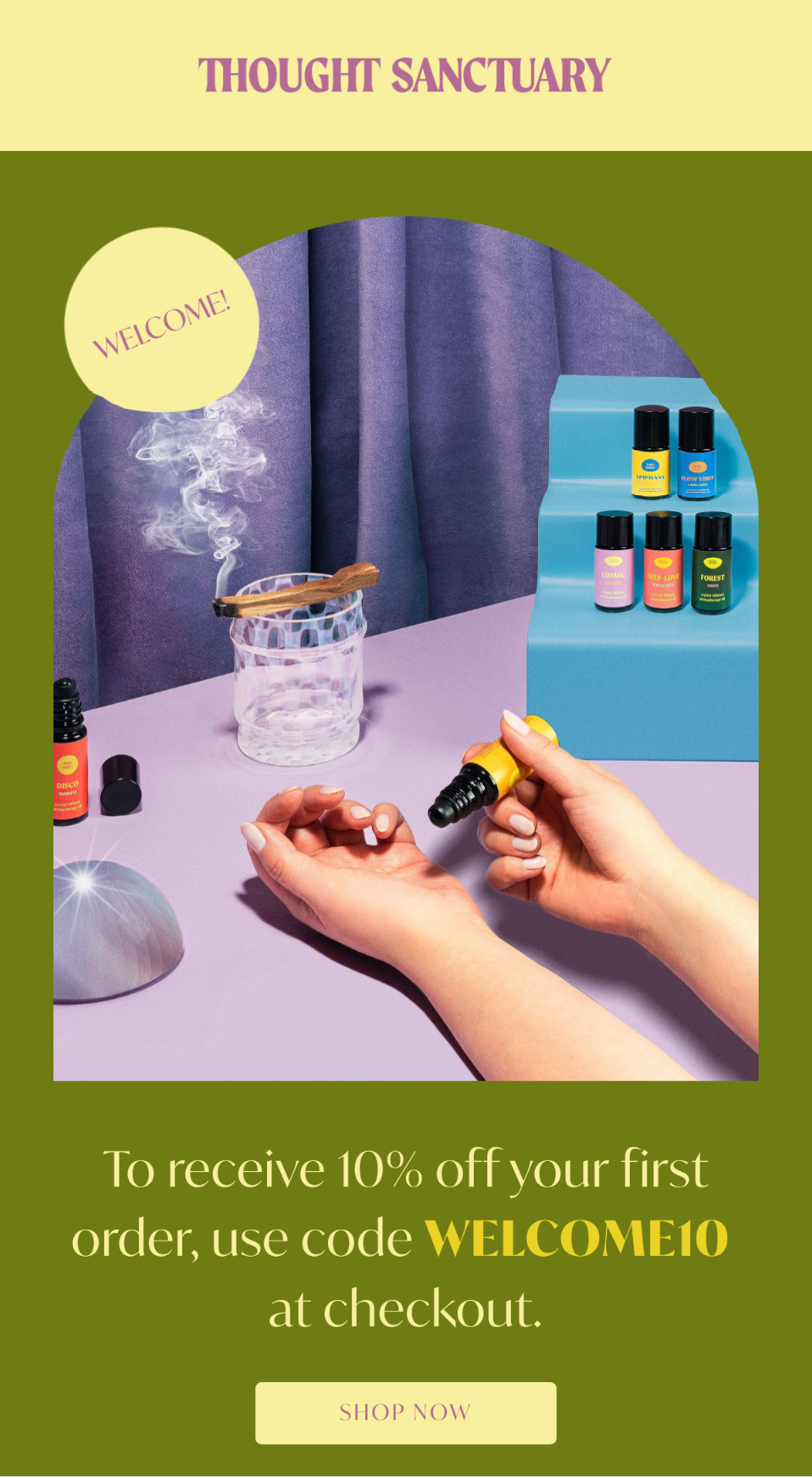
Giving a discount to new email subscribers is a smart tactic to encourage them to make their initial purchase. When you include a discount code in your welcome email, you’re expressing gratitude for their interest in your brand and nudging them a bit closer to making a purchase.
What works well?
– Their exclusive offers and discount code make you feel like a valued member of their email list (and encourage you to hit “Buy now” for your next purchase).
– The call-to-action (CTA) placed right after the discount code motivates readers to utilize the discount code promptly.
8. Write inspirational subject lines
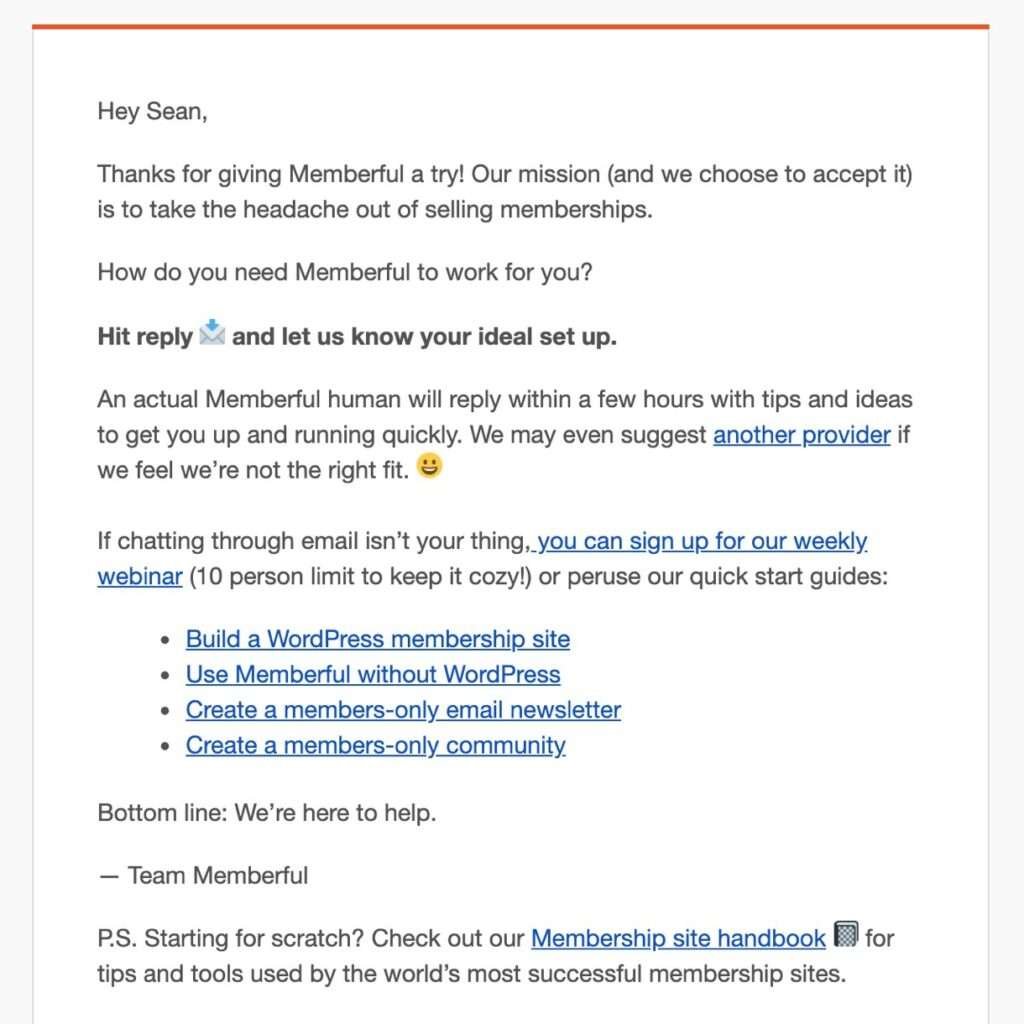
What works well?
– Memberful’s email grabs your attention with a purposeful and straightforward subject line.
– The email’s friendly tone and language address you directly.
– They demonstrate humility by suggesting alternative solutions for your needs!
Tip: Using emojis sparingly can add a touch of fun and break the monotony of a welcome email.
9. Always be positive (avoid negative phrasing)
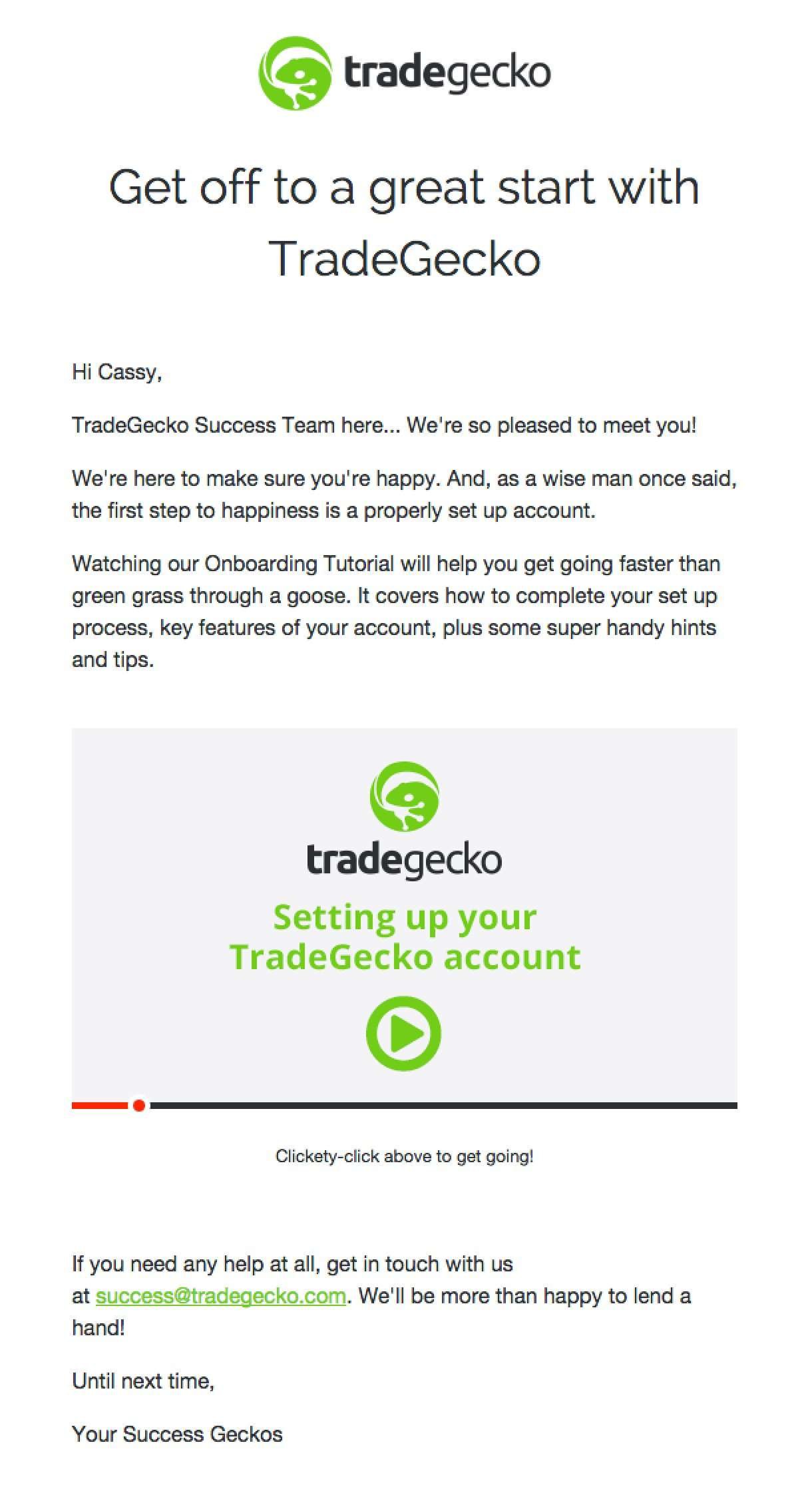
10. Run A/B tests to perfect your strategy
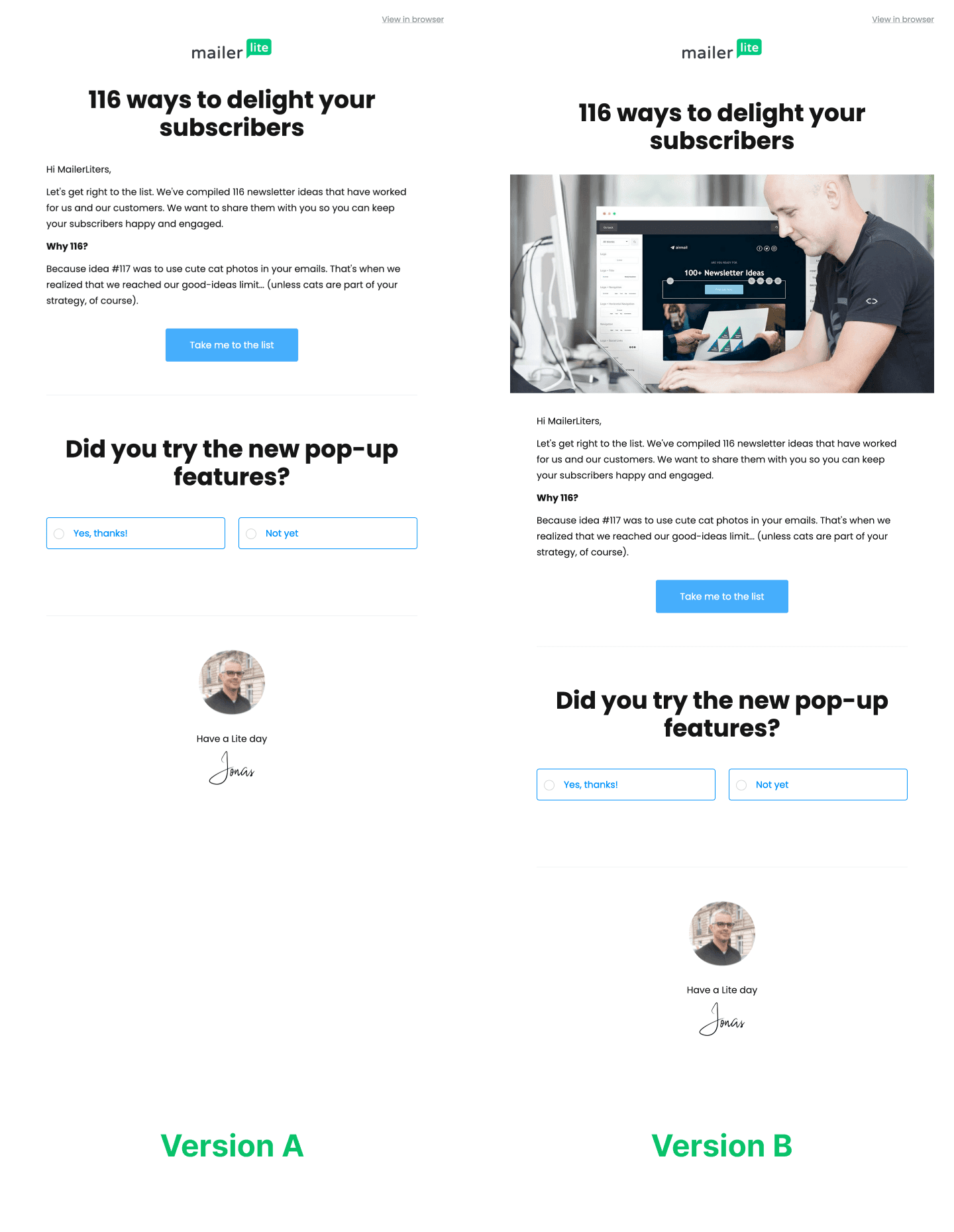
A/B testing is akin to being a detective. You need to collect evidence, analyze it, and formulate a hypothesis about what strategies are effective and which ones aren’t. With a bit of luck, you might even crack the code for crafting the ideal welcome email series.
Tip: A/B testing is more of a marathon than a sprint. It’s crucial to focus on testing just one element of your welcome email at a time, such as your subject line or call-to-action (CTA). This approach provides clear insights into how specific changes impact your email metrics directly.
How to write Welcome Email Subject Lines
If welcome emails represent the initial image of your brand, then the subject line of your welcome email is like that brief moment of eye contact just before you extend your hand for a handshake. It’s the first impression that can determine whether you’ll be greeted warmly with a firm handshake and a smile, or with cautious reserve.
You aim to express your personality while also making it evident that the email marks the start of something unique and special.
So, how can you craft a subject line for your email that impresses, much like the examples of remarkable welcome emails?
5 welcome Email Subject line examples
TULA uses an incentive to create interest. Offering a promotion or coupon is one of the most effective ways to improve open rates.
Holland & Barrett follow up their welcome message with an invitation to share personal details. It’s unclear how they will do it, which is why you’ll open the email to see.
KISSmetrics combines its welcome message with a personal touch. This subject line uses both the sender and the recipient’s real name.
Indie Hackers wants to help you. By asking a question in the subject line, the reader will open the email if they want to answer it.
Syed Balkhi of OptinMonster takes an inclusive approach with a promise of insider information and advice. He follows the welcome message with a CTA.
Whether you run a small business or a large corporation, kicking off your subscriber journey with a friendly welcome email is the initial stride toward a fantastic customer experience.
Feeling inspired by these welcome email samples? You’re probably eager to begin crafting your own welcome email!

